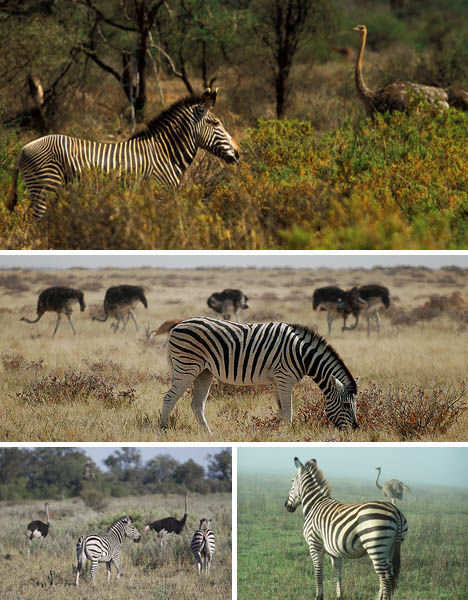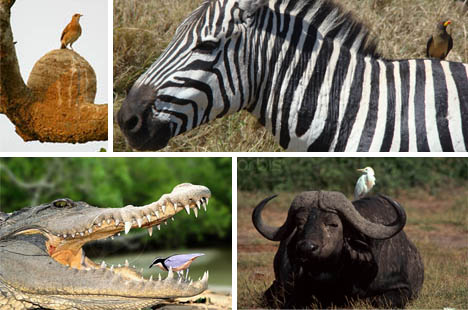
There are many unlikely animal pairings in the world, but some of the most uncanny ones involve birds. Wait, what? Those flighty animals the flit about and flee at the slightest sign of trouble? Precisely those. They have been known to climb in and clean the teeth of a crocodile, lounge on the backs of buffalo, moose, hippos, elephants and zebras and even to share a residence with ants – their natural prey. The first set of symbiotic wonders focused mainly on underwater matches – this set focuses on fliers of the friendly skies.
Plovers and Crocodiles
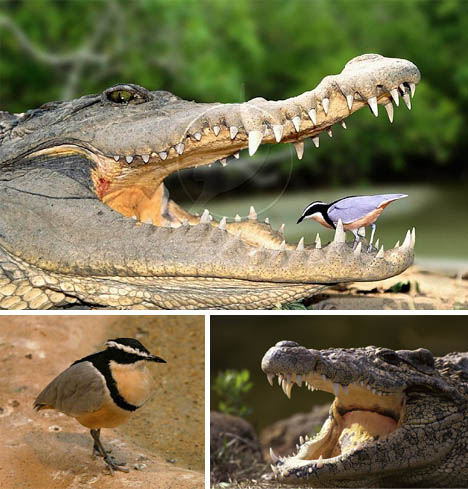
(Images via: WarrenPhotographic, EnjoyFrance, AboutAustralia)
It looks like something out of a storybook – and in fact it can be traced back to accounts told thousands of years ago – a crocodile opens its mouth, invites a bird in before … what? ::Chomp:: it swallows the sap alive? Amazingly, the crocodile remains still while the plover picks meat from its mouth. This cleans the crocodile’s teeth and prevents infection while providing a somewhat scary meal for the hungry bird.
Honeyguides and Ratels
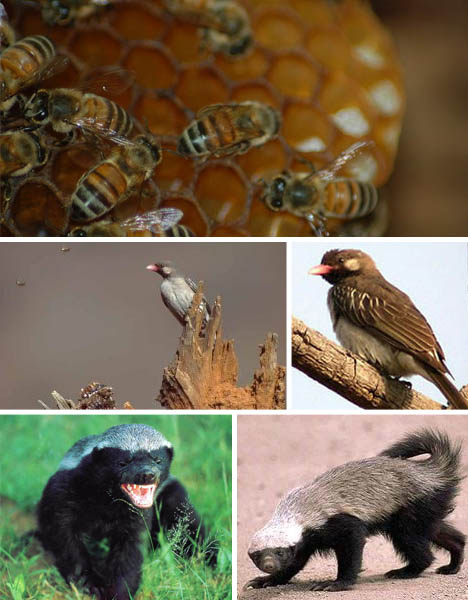
(Images via: UnderWater, Navy, Montanag, NashvilleZoo, NigelDennis, Wikipedia)
The honeyguide bird has something of a problem: it wants access to the juicy wax insides of a honeybee nest but lacks the ability to access it directly. It has learned, however, to lead other predators to such nests and then wait for the remains of the spoils. The honey badger (or ratel, shown above) is one such creature with which the bird works in collaboration, but honeyguides have also been known to lead humans to find nests. One native population finds honey three times faster because of these incredible birds.
Egrets and … Everything Else
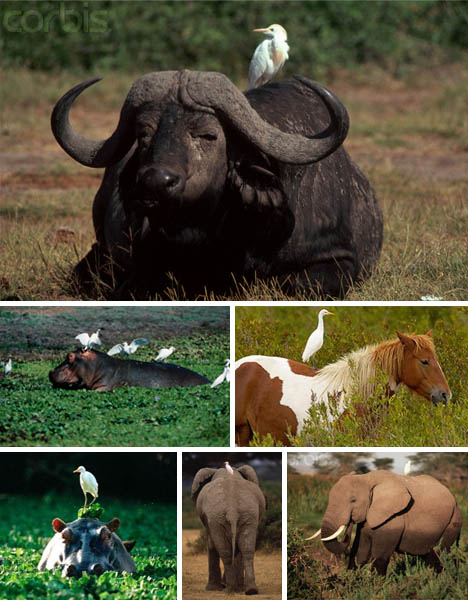
(Images via: DiegoPaccagnella and Angelfire)
Egrets are strangely equal-opportunity symbiotics – they will ride on the backs of all kinds of large mammals, picking parasites from their fur or skin to nourish themselves, which, in turn, frees these animals of their burden – often kicked up to their backs while walking. Moreover, it is suspected that egrets also are more sensitive to changes in their surroundings and vigilant than their steeds, making them good at early warnings when it comes to environmental predators or other dangers.
Oxpeckers and Zebras
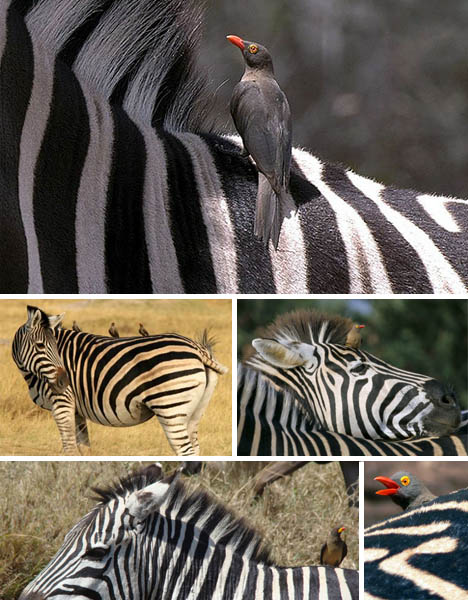
(Images via: ArnoLouise, AllPosters, OurLivesatSea, Flickr and HGBirder)
Oxpeckers, like egrets, free their furry companions of lice, ticks and other annoyances but of particular importance is their flying scream when predators approach – after all, zebras are more susceptible than many large mammal species (such as elephants and hippos shown above) to potential aggressors. However, their actions are not always completely in the interests of their hosts: they are suspected to sometimes nip open wounds on a zebra’s back in order to encourage more parasites to take root for later meals.
Ostriches and Zebras
(Images via: Flickr, Corbis, GreenSpun and PicasaWeb)
Oxpeckers aren’t the only birds that zebras have been known to pair with – they also are often found in the company of giant flightless ostriches. Both of these species is justifiably concerned with approaching danger. Unfortunately, the ostrich has terrible senses of smell and hearing and the zebra has poor eyesight. Fortunately, the zebra can smell or hear certain dangers approaching while the ostrich can see others. Both are prepared to warn one another at a moment’s notice so they can each flee as needed.
Woodpecker and Tree Ants
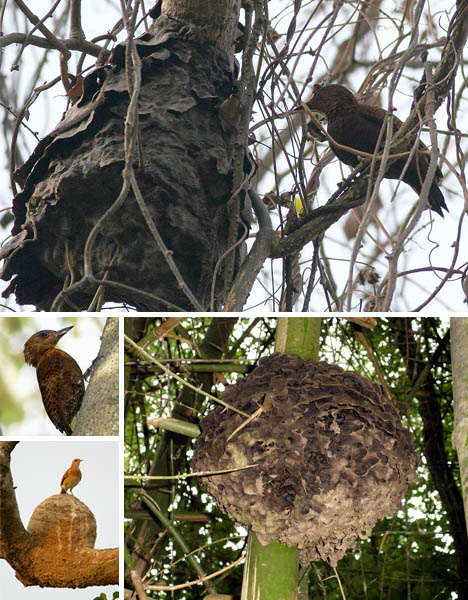
(Images via: WiseDude, KolkataBirds, Chandra and Wikimedia)
No one knows for certain how the arrangement works, but a certain species of woodpecker and tree ant are known to call temporary truces despite being mortal enemies most of the time. The southern rufous woodbecker and the black tree ant are normally predator and prey – but when the bird lays its eggs in the nest of the ants an agreement is made, a non-aggression pact of sorts, that protects the bird’s eggs from attacks by the nest and the ants’ nest from other birds while the chosen bird is nesting there.
Meat Ants and Leafhoppers
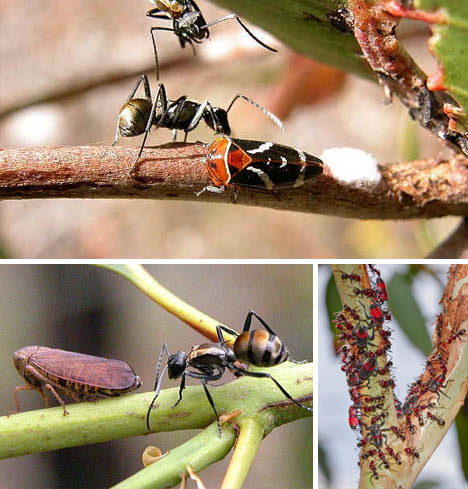
(Images via: Wikipedia, Geocities and BrisbaneInsects)
Other forms of ants, including meat ants, have been known to team up with other species as well, including butterflies and leafhoppers. Normally, meat ants are vicious and territorial – feeding on dead animals and forcing other species of ants to stay out of their way and forage at night. However, they make special exceptions for certain other creatures of the trees and skies that secrete substances they can feed on – not only do they leave these partners alive but they actually actively protect them from predators as well.


